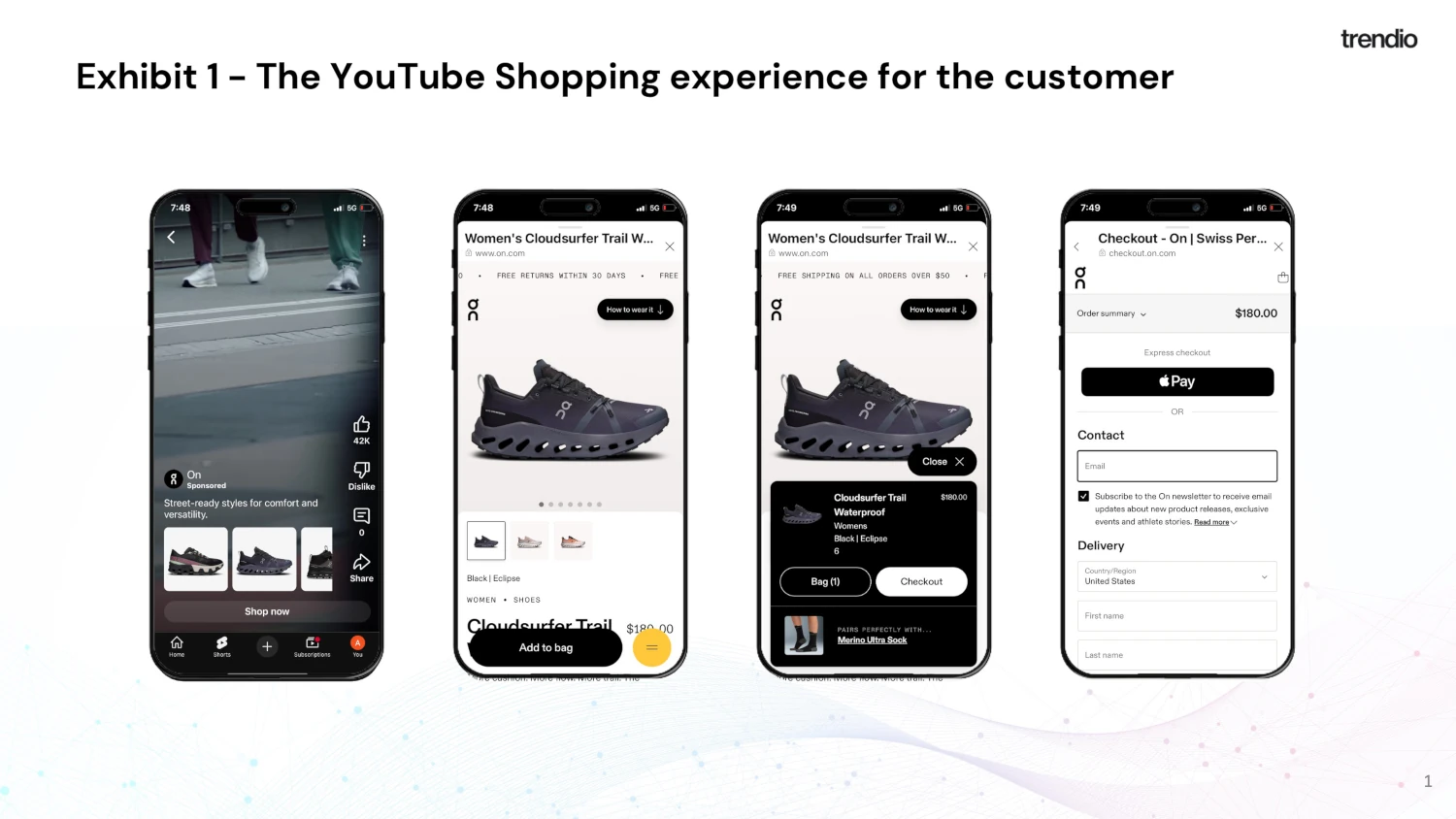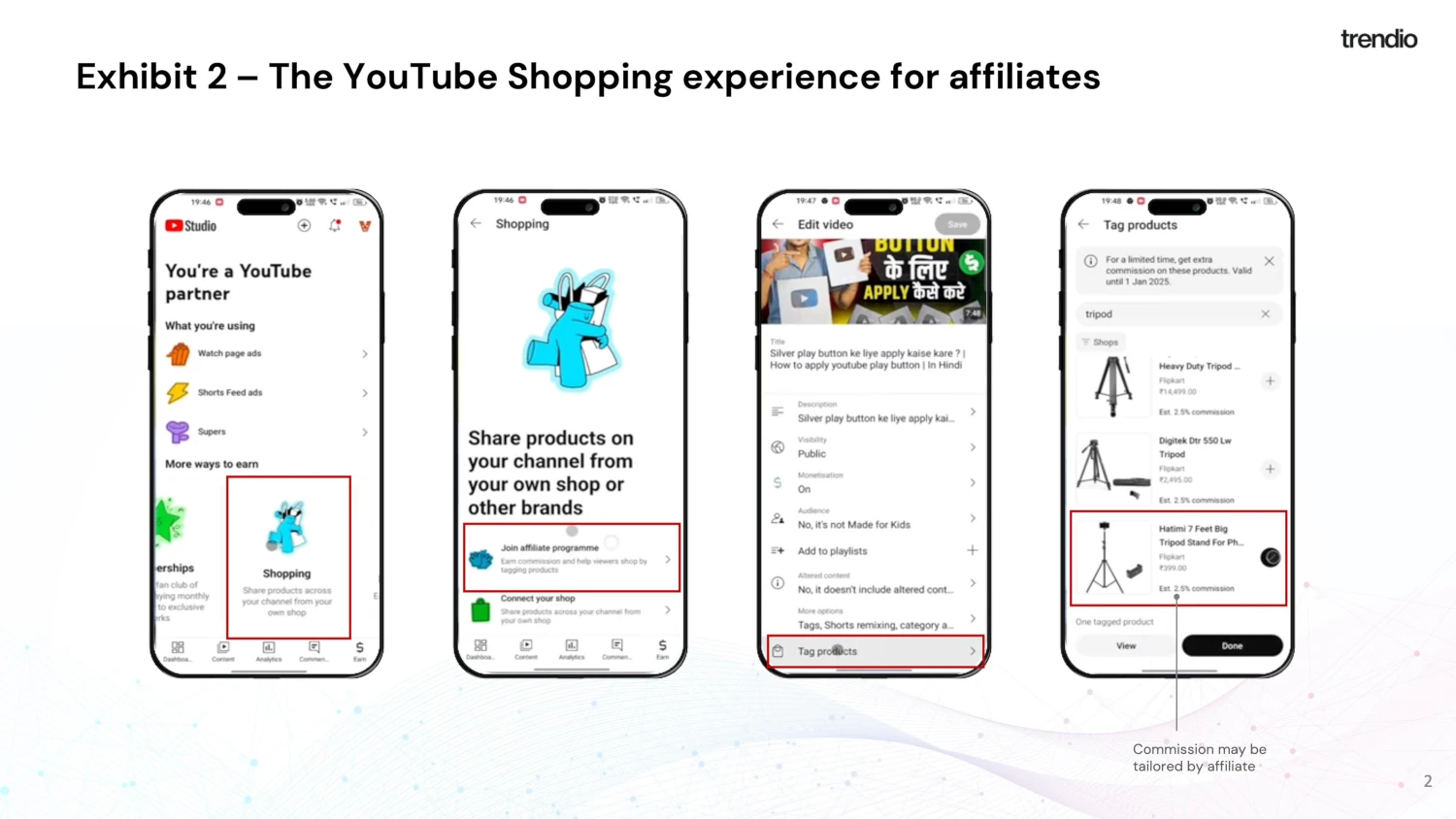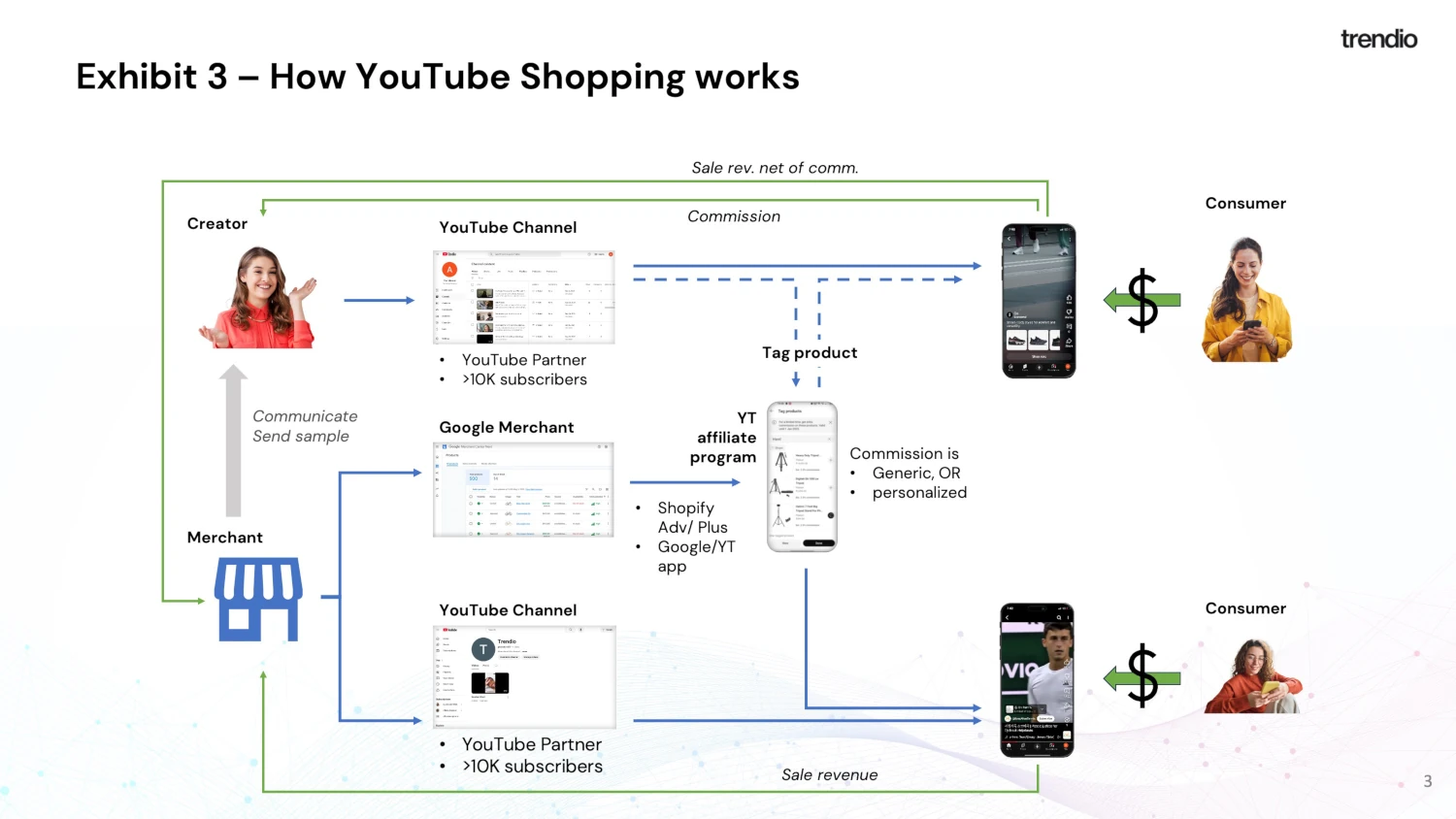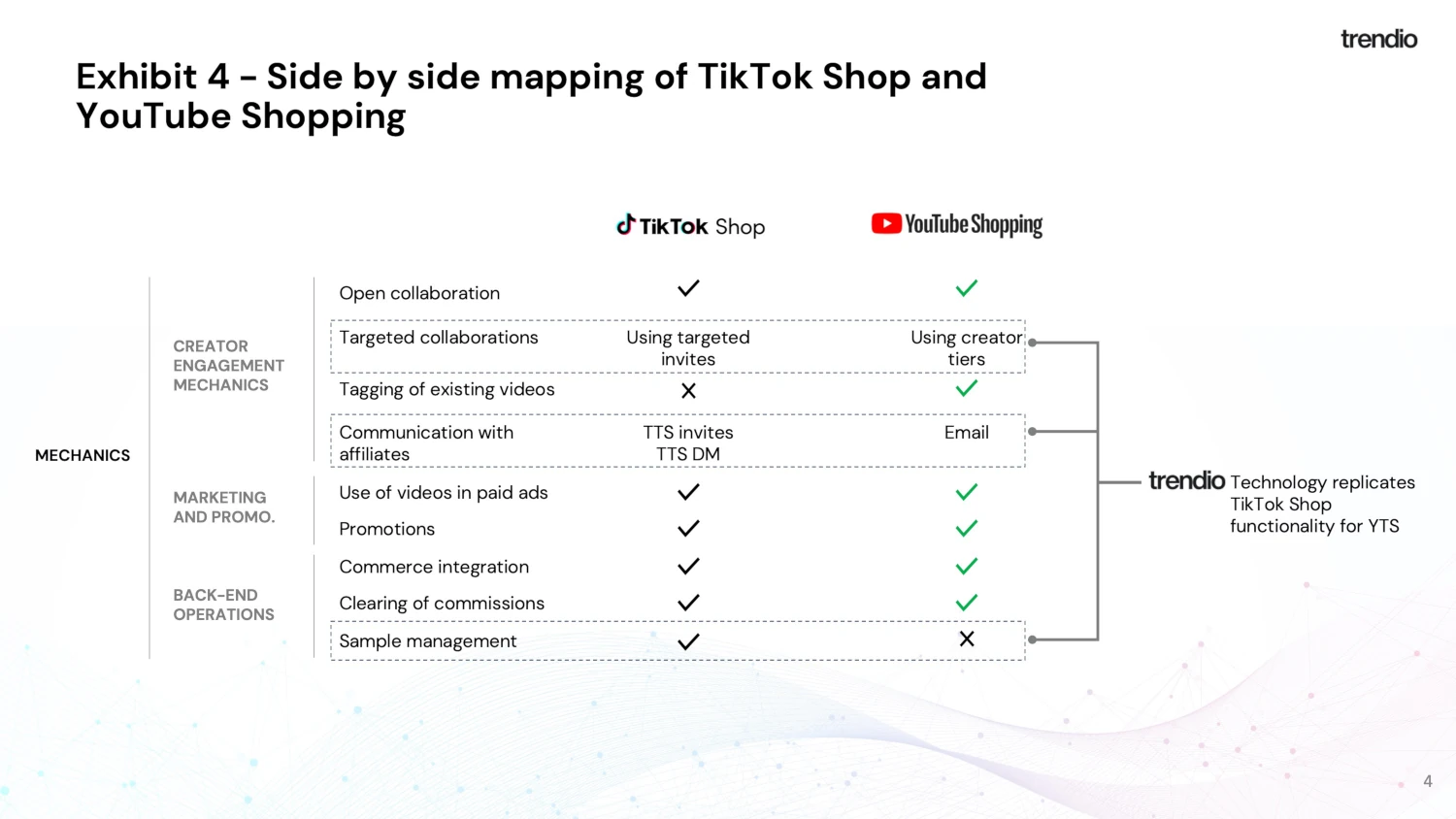Since Google launched its new version of YouTube Shopping in April 2024, the ecommerce industry has been closely watching its development. While YouTube has long been a powerful platform for discovery, its transition into a full-fledged shopping destination has sparked both excitement and confusion among brands, creators, and marketers.
With a potential TikTok Shop ban looming, interest in YouTube Shopping surged in early 2025, as sellers and affiliates began searching for alternatives. Given YouTube’s massive reach—253 million monthly users in the U.S. alone, compared to TikTok’s 170 million—the platform presents a significant opportunity.
However, unlike TikTok Shop, which offers a fully integrated shopping experience, YouTube Shopping operates through a more fragmented ecosystem. In this article, we break down how YouTube Shopping works, how it compares to TikTok Shop, and what merchants need to know to maximize its potential.
What’s the user experience?
For Shoppers: The YouTube Shopping user experience is as seamless as it is on TikTok. Exhibit 1 below illustrates the experience for a customer buying a pair of sneakers.

When available through YouTube Shopping, a carousel of tagged products is displayed at the bottom of a YouTube video. Different from TikTok Shop, multiple products can be tagged on the same video, which adds a layer of flexibility. When the customer taps into the product tile, a product detail page appears, like on TikTok Shop, and the customer can add the item to their bag. Relative to TikTok, the customer has the option to keep in the bag and continue shopping, or checkout directly on YouTube.
For qualified affiliates: the process is equally simple, as depicted in Exhibit 2.

YouTube Partners with over 10K subscribers can join the YouTube affiliate program. Once they have signed up, they are able, before they post a video, to tag products by tapping on “Tag products”. They can then search for the product they are promoting and tag it. As mentioned above, they can tag more than one product on every video, and they are also able to tag products on videos already published. Affiliates earn either a standard commission (set by the seller) or a higher commission for specific partnerships.
The YouTube Shopping Ecosystem: How It Works Behind the Scenes
Unlike TikTok Shop—which integrates product listings, transactions, and affiliate management into one platform—YouTube Shopping relies on multiple components.

To participate in the YouTube Affiliate Program for Merchants, a business must have Google Merchant enabled and a Shopify Advanced or Plus account with the Google/YouTube Shopify app installed. The entry requirements for these systems are minimal, and most merchants should be able to access them without issue.
Google Merchant serves as the foundation for listing products, a system that many merchants already have in place for running e-commerce ads on Google. The Google/YouTube app on Shopify acts as the bridge between YouTube Shopping and a merchant’s Shopify store, enabling sellers to register for the YouTube Affiliate Program.
Once both systems are set up, merchants can assign commissions to their products, allowing affiliates to tag and promote these items in their videos. Sellers have the flexibility to offer standard commissions, which are open to all affiliates (similar to open collaborations on TikTok Shop), or custom commissions for specific creators (equivalent to targeted collaborations on TikTok). Unlike TikTok Shop, YouTube does not yet offer an affiliate center portal to streamline communication with creators or facilitate free sample distribution. However, YouTube has announced that these features are in development. In the meantime, merchants must manage affiliate outreach and sample distribution independently, outside of the platform.
Despite the lack of built-in communication tools, YouTube Shopping’s back-end operations are fully functional. When a customer purchases a product through a tagged video, YouTube processes the payment, deducts and distributes the affiliate commission, sends the remaining funds to the merchant, and ensures the order is properly synced with Shopify.
Merchants may also want to tag products in their own videos, in which case they are considered channel owners and need to meet the minimum 10K and YouTube Partner requirements. Once these requirements are met, merchants can tag their products just like an affiliate, but with one key advantage—they retain 100% of the revenue generated from customer purchases, as no commission is deducted. In essence, this allows merchants to function as their own affiliates, leveraging their own content to drive direct sales while maximizing profitability.
How does the system compare with TikTok Shop and what are gaps that need to be managed by the merchant?
For brands familiar with TikTok Shop, a side-by-side comparison of its functionality with YouTube Shopping provides valuable insight into how the two platforms differ, as outlined in Exhibit 4.

One significant difference, of course, is that a Shopify Advanced or Plus subscription is required to participate in YouTube Shopping, and this alone may be a large barrier for some players.
That said, while YouTube Shopping is less self-contained and still evolving, most of the core functionalities that drive success on TikTok Shop can be replicated.
However, for the platform to function as a fully scalable affiliate ecosystem, three key gaps need to be addressed: (1) a system to convert individual creator commissions into a structured targeted collaboration model, (2) a scalable communication tool to reach thousands of potential affiliates with targeted collaboration invites—currently limited to email since YouTube lacks an in-platform DM system, and (3) a free sample management system integrated with Shopify to streamline product distribution to affiliates.
How to Make YouTube Shopping Work for Your Brand with Trendio
While YouTube Shopping is still evolving, it already offers a compelling alternative to TikTok Shop. Brands that understand how to navigate its ecosystem can tap into YouTube’s unmatched audience size and high-intent shoppers.
At Trendio, we are actively developing solutions to bridge the gaps in YouTube Shopping, including:
- A system for turning custom affiliate commissions into a structured targeted collaboration model.
- A scalable communication tool to reach and manage thousands of affiliates.
- A Shopify-integrated free sample management system for YouTube Shopping affiliates.
These tools aim to close the gaps and streamline YouTube Shopping into a more scalable social commerce channel.
About Trendio
Trendio is a video shopping technology provider and agency that works with brands across categories on TikTok Shop, YouTube Shopping and video web embedding. Trendio combines proprietary AI solutions with channel expertise to identify and engage the best affiliate creators for every brand in every channel, manage their entire video creation process, optimize brands' own video posts using video AI, manage paid ads for maximum returns and deliver best-in-class tracking. For more information, visit www.trendio.ai.
About the Author(s)
Alex Perez-Tenessa is the Founder & CEO of Trendio. Prior to Trendio, he was the VP of US Prime Video at Amazon, VP of Beauty and Personal Care at CVS Health and Partner in the Retail Practice of McKinsey & Company.
